Catalogue > Search
Results for : Tout le catalogue

Broersen & Lukács, Margit Lukács
Establishing Eden
Video | hdv | color | 10:0 | Netherlands | 2016
In Establishing Eden, Broersen & Lukács focus on the establishing shot: the moment a landscape is identified and becomes one of the main protagonists in a film. In blockbusters like ‘Avatar’ (James Cameron, 2009) and the film series ‘Lord of the Rings’ (Peter Jackson, 2001-2014), these shots have been used to capture and confiscate the nature of New Zealand, propagating itself as a new Eden, evergreen and unspoilt. Here, fiction takes over from reality: mountains and forests exist under the name of their cinematic alter ego’s. Broersen & Lukács travelled through the wilderness of New Zealand to capture these landscapes, and with that, they appropriate the nature of New Zealand once again. Creating an architecture of fragments connected by the camera movement of a perpetual establishing shot, they show this Eden as a series of many possible realities, an illusion that comes together just as easily as it falls apart.
Margit Lukács (Amsterdam, 1973) & Persijn Broersen (Delft, 1974) are artists living and working in Amsterdam. They work in a wide variety of media- most notably video, animation and graphics- producing a myriad of works that reflect on the depiction of nature in our increasingly virtual society. With intricate layers of (filmed) footage, digital animation and images appropriated from the media they demonstrate how reality, (mass) media and fiction are strongly intertwined in contemporary culture. Broersen and Lukács studied at the Sandberg Institute and at the Rijksakademie in Amsterdam. Their films, installations and graphic work have been shown internationally, including: Biennale of Sydney (AUS), Stedelijk Museum Amsterdam (NL), Muhka (Bel), Centre Pompidou Paris (FR), Shanghai World Expo (CN), Casa Enscendida, Madrid (ESP). Their films have been shown at several festivals including LAForum in Los Angeles, Kassel Dokumentar and filmfestival (Ger), Paris Rencontres (FR, Ger & Esp), New York Film Festival (USA), IDFA, Amsterdam (NL) and International Film Festival Rotterdam (NL).
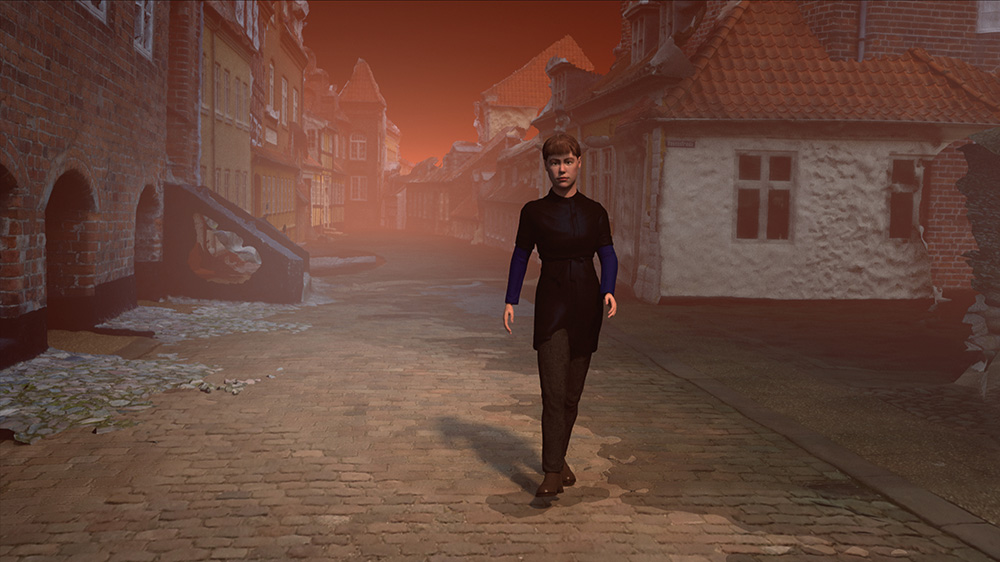
Broersen & Lukács, in collaboration with Nina Vadsholt
All, or Nothing at All
Video | hdv | color | 7:45 | Netherlands, Denmark | 2019
In ‘All, or Nothing at All’ Margit Lukács and Persijn Broersen explore the hybridity, in image and sound, of the ultra-thin surface of digital photography in order to contemplate its role in shaping our experience and memory. ‘All, or Nothing at All’ takes its cue from Frank Sinatra’s 1939 first hitsong. Originally performed from an utterly male perspective, Danish singer Nina Vadshølt transformed the song into an angelic, rebellious chant in which many voices converge and dispute eachother. Broersen & Lukács constructed an army of avatars, impersonations of Nina Vadshølt, that ramble through a digital replica of the ancient city of Viborg(Denmark): a labyrinth of abandoned malls, garages, crusader paths and centuries old alleys as portals to another dimension. The choreography is based on West Side Story, the 1961 adaptation of Romeo and Juliet, in which Puerto-Rican and Polish streetgangs fight eachother. In ‘All, or Nothing at All’ the duality is depicted in the display of the real and the virtual, in which the ancient town of Viborg appears as a hollow veil resembling the way in which everything seems feasible that appears on our screens, a world in which there is no middle ground, only Everything or Nothing.
Margit Lukács and Persijn Broersen are artists based in Amsterdam, working together since 2002. In today’s visual culture, fiction is usurping the place of reality. Broersen & Lukács respond to this by creating video animations presenting a parallel world of spectacular images that wholly absorb the viewer in which 'nature' functions as a mirror for our media-dictated culture. Their works, consisting of layered projections, digital animations and spatial installations, have been exhibited by renowned institutions and organisations both domestically and internationally. Lukács & Broersen’s work have been shown at a.o. Rencontres Arles (France), Art Wuzhen (China), Biennale of Sydney (Australia), Karachi Biennial (Pakistan), Stedelijk Museum Amsterdam (Netherlands), FOAM (Netherlands), MUHKA (Belgium), Centre Pompidou (Paris), Kröller Müller (Netherlands) and Casa Enscendida (Madrid). Their films have been shown at several festivals including LAForum (Los Angeles), Oberhausen FilmFest (Germany), Kassel Dokumentar und Filmfestival (Germany), Rencontres Paris Berlin at Louvre, Paris (France), Haus der Kulturen der Welt, Berlin (Germany), the New York Film Festival (United States), IDFA (Netherlands) and IFFR (The Netherlands). Upcoming shows are Forest on Location, A Space Gallery, (Toronto, Canada) Shaping the Invisible World- at Hek (Basel , Switzerland) and Rubble: A Matter of Time at Auckland Art Gallery (New Zealand.
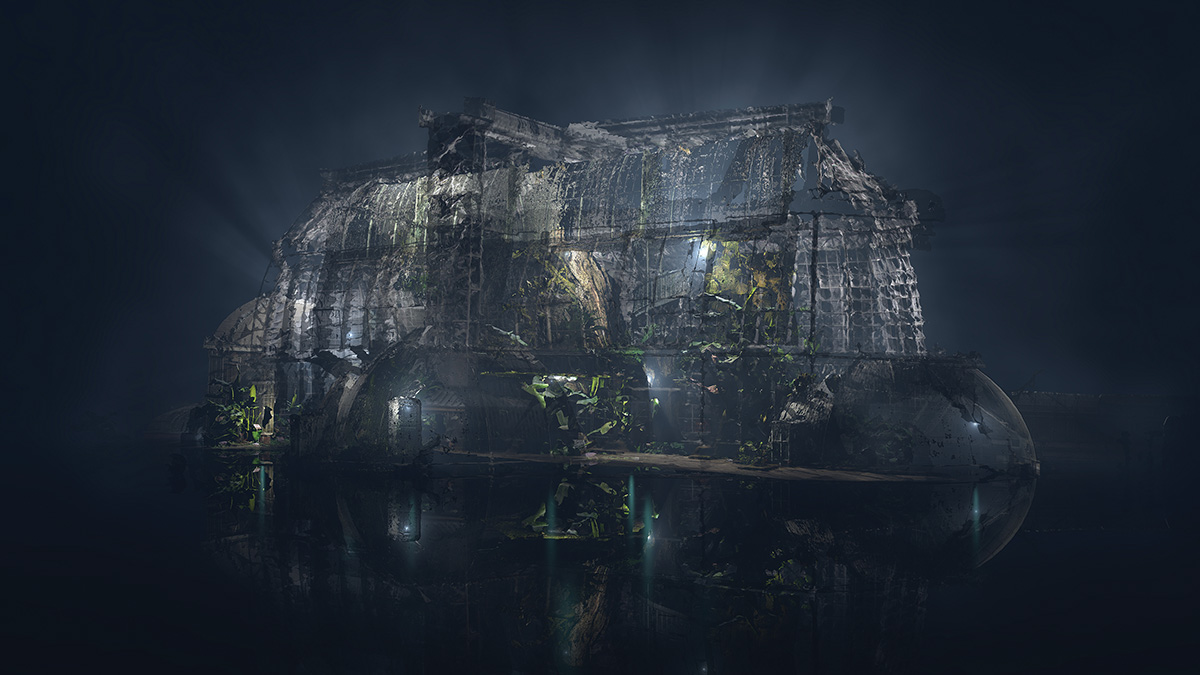
Broersen & Lukács
I Wan'na Be Like You
Fiction | mov | | 12:40 | Netherlands | 2024
Walt Disney’s film The Jungle Book(1967) and the 1894 book by Rudyard Kipling on which it is based are emblematic of Western imperialism, not only othering nature and animals, but also bearing colonial traces. This film by Lukács & Broersen, I Wan’na Be Like You, is named after the song of the same name from Disney's film. A ghostly figure appears and seduces the viewer with a dance and a song reminiscent of the song from The Jungle Book. The scene is set in a dilapidated glasshouse, a composite of several Western botanical gardens, a place where ‘exotic’ nature is tamed and studied for the scientific needs of mankind. A place where plant and tree species from colonised countries are othered and externalised. After its song and dance, the ghostly creature disappears to make way for the avatars of the Dutch Afro-Surinamese music group Black Harmony. They walk towards the greenhouse and confidently sing “Na mi”, “I am”, in their native language—a song that is their version of the Disney song.
Margit Lukács and Persijn Broersen are an artist duo based in Amsterdam, the Netherlands. They are graduates of Graphic Design from the Rietveld Academy Amsterdam, followed by a MFA at Sandberg Institute Amsterdam. Furthermore they were artists in residence at the Rijksakademie in Amsterdam (NL). Broersen and Lukacs explore in their work the connections between the histories of the relationship between culture and nature, rooted in their interest in media, music and technology. They interweave this with the politics of representing and appropriating nature, drawn from mythological, (art) historical, scientific and cinematic sources. Their work consists of films, installations and performances, in which the mythologies/origins of actual and fictional natural phenomenons are unraveled and retold from multiple perspectives. Their work has been exhibited in renowned institutions and organisations worldwide, a.o. Stedelijk Museum Amsterdam (NL), MacKenzie Art Gallery (CA), arc en rêve (FR), Stedelijk Museum Breda (NL), Centraal Museum Utrecht (NL), FOAM (NL), MUHKA (BE), Centre Pompidou (FR), Breda Photo (NL), Cultural Capital City of Europe Esch (LU), HEK, Basel (CH), Kröller Müller (NL), WROBiennale, Wroclaw(PL), the Biennale of Sydney (AU), Rencontres Arles (FR), Wuzhen Biennial (CN). They represent the Netherlands at the Gwangju Biennale (KR) 2024
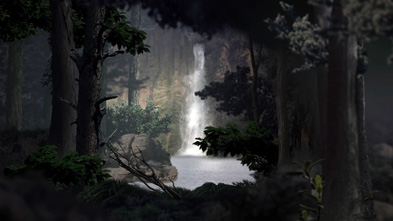
Broersen & Lukács, Margit Lukacs
Mastering Bambi
Video | hdv | color | 12:35 | Netherlands | 2010
Mastering Bambi Walt Disney`s 1942 classic animation film `Bambi` is well known for its distinct main characters ? a variety of cute, anthropomorphic animals. However, an important but often overlooked protagonist in the movie is nature itself: the pristine wilderness as the main grid on which Disney structured his `Bambi`. One of the first virtual worlds was created here: a world of deceptive realism and harmony, in which man is the only enemy. Disney strived to be true to nature, but he also used nature as a metaphor for human society. In his view, deeply rooted in European romanticism, the wilderness is threatened by civilization and technology. The forest, therefore, is depicted as a `magic well`, the ultimate purifying `frontier`, where the inhabitants peacefully coexist. The original 1924 Austrian novel `Bambi, A Life in the Woods` by Felix Salten was banned in 1936 by Adolf Hitler. The novel shows nature (and human society) more as a bleak, Darwinist reality of competition, violence and death. Broersen and Lukács recreate the model of Disney`s pristine vision, but they strip the forest of its harmonious inhabitants, the animals. What remains is another reality, a constructed and lacking wilderness, where nature becomes the mirror of our own imagination. The soundtrack is made by Berend Dubbe and Gwendolyn Thomas. They`ve reconstructed Bambi`s music, in which they twist and fold the sound in such a way that it reveals the dissonances in the movie.
Persijn Broersen & Margit Lukacs are artists living and working in Amsterdam and Paris. They work in a wide variety of media- most notably video, animation and graphics- producing a myriad of works that reflect on the ornamental nature of today`s society. With layers of depersonalization, re-mediation and re-imagination they demonstrate how reality, (mass)media and fiction are strongly intertwined in contemporary culture. This results in a body of work that hovers between ornament and perspective, between a journey and a cul-de-sac. Their work is shown in filmfestivals, museums and galleries and broadcasted on TV worldwide. Recent exhibitions/screenings include: Casa Encendida, Madrid / Centre Pompidou, Paris/ Stedelijk Museum Amsterdam/ Oberhausen Filmfest, Germany and more


Broersen & Lukács, Lukacs Margit and Robertsson Smari
East of the Sun and West of the Moon
Experimental video | 4k | color | 0:0 | Netherlands, Sweden | 2022
East of the Sun, West of the Moon is the title of a Nordic fairytale about a heroine who leads a cursed prince, turned into a white bear, to a place that lies East of the Sun, West of the Moon. This lovestory, in which the fate of humans and animals are intrinsically linked, is later on used in the song with the same name, most famously interpreted by Frank Sinatra (1940). During a residency in Sweden (at Hybrida), a centuries old iron industry wasteland that turned into endless forests where the wild wolves roam, Broersen and Lukács conceived n a collaboration with Smári Róbertsson a new version of East of the Sun, West of the Moon. They transformed Sinatra’s beguiling song into a sometimes desperate, growling plea for love, embodied by a white wolf. Spinning in circles, the hybrid wolfman(creature) is torn between the natural and the virtual, the animal and the man inside him.
Margit Lukács and Persijn Broersen work and live in Amsterdam (NL). They are graduates of Graphic Design from the Rietveld Academy Amsterdam, followed by a MFA at Sandberg Institute Amsterdam. Furthermore they were artists in residence at the Rijksakademie voor Beeldende Kunsten in Amsterdam. Their work, consisting of layered projections, digital animations and spatial installations, has been exhibited by institutions and organisations worldwide, among others at Remix Nature/Cultural City of Europe ESCH (LX), HEK, Basel (CH), WRO Media Biennale, Wroclaw (PL), the Biennale of Sydney (AU), Le Lieu Unique, Nantes (FR), LUMA Arles (FR), Wuzhen Biennial Now Is The Time(CN), U2/UCCA Beijing (CN), Stedelijk Museum Amsterdam (NL), FOAM (NL), MUHKA (BE), Centre Pompidou (FR), Kröller Müller (NL) and ERES Foundation Munchen (DE). Their films have been shown at a.o. ARTE TV, Oberhausen Film Fest (DE), LAForum (US), Kassel Dokumentar und Filmfestival (DE), Videomedeja, NoviSad (RS), Oberhausen Film Fest (DE), LAForum (US), Rencontres Internationales Paris Berlin@Louvre Paris and Haus der Kulturen der Welt Berlin, the NewYork Film Festival (US), and the domestic festivals IDFA and IFFR.

David Brognon, Stéphanie Rollin
Mon heure de gloire
Experimental doc. | hdv | color | 0:0 | Luxembourg, Belgium | 2017
David Brognon & Stéphanie Rollin ont représenté l’abandon de l'activité et l’interruption brutale du temps qui en découle, par des images de l’usine désertée, d’horloges figées, et des enfants des travailleurs cherchant un nouveau lieu de transmission.

Brognon Rollin, David Brognon
I Found You on an Empty Page
Video | hdv | color | 1:38 | Luxembourg, France | 2014
Standing in front of a window, a young boy methodically repeats the same action: watching his shadow drawn by the sun, placing a glass marble on the dividing line between light and shade, on the outline of the shape of his body. A number of marbles in a line suggest the repetition of this solitary ritual, month after month, year after year. This simple action represents the literal and painstaking measurement of the passing of time, the embodiment of an ancient gnomon. Cosmic time versus living time. Between a child?s game and first seriousness born of an awareness of the passing of time, this repeated action retains its poetry and its mystery. Is the child trying to check the relentless passage of time by placing this trivial object on the outline of his silhouette? Does he, like Tom Thumb, wish to mark each stage of his journey through life, so that he can remember it better or create his own future narrative? The film depicts a journey of discovery, a sort of simple yet sublime parable of our own temporality and the vanity of our actions. Hélène Guenin, Director, Mamac, Nice

Brognon Rollin
The Most Beautiful Attempt (11 Years After), 2023
Video | 4k | color | 11:3 | Luxembourg | 2023
Lancé dans une course poursuite avec le soleil initiée en 2012 dans « The Most Beautiful Attempt » Anton, 25 ans maintenant, pousse toujours inlassablement des cristaux de sel pour les tenir dans la lumière.
David Brognon, né en 1978 à Messancy (B), et Stéphanie Rollin, née en 1980 à Luxembourg (L), vivent et travaillent à Paris et Luxembourg. Les deux artistes démarrent leur collaboration en 2006, après leur rencontre au MUDAM de Luxembourg. Ensemble, ils développent un travail singulier (installations, sculptures-objets, vidéos, performances, photos), dont l’humain est le matériau principal et la rencontre le moteur. A partir de situations réelles et le plus souvent complexes, ils donnent corps à l’expérience du temps, de la durée ou de l’attente, en prise directe avec la matérialité d’un territoire et de ses limites – en particulier dans le contexte de situations d’enfermement. Attentifs à la marge plutôt qu’au centre, les artistes s’intéressent aux interstices flous où la société cantonne celles et ceux qu’elle marginalise ou invisibilise. « Notre univers, c’est la périphérie, c’est cet espace-temps qu’on ne veut pas voir ».
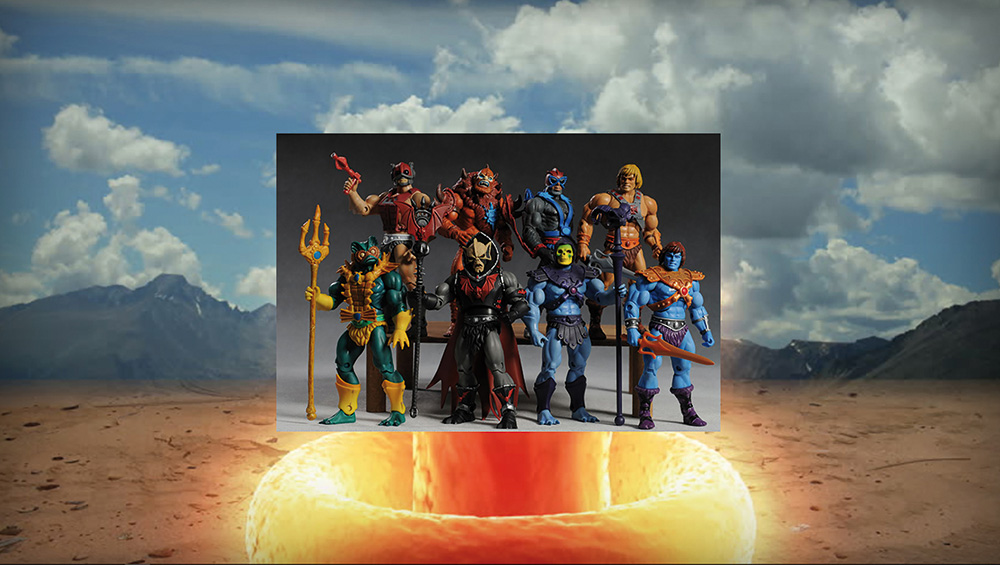

émilie Brout, Maxime Marion
b0mb
Video | hdv | color | 9:58 | France | 2018
b0mb is an online generative video, renewed at each viewing and accessible via a dedicated website. With an intense rhythm, it presents a montage of hundreds of images of all kinds from the internet, displayed on a musical soundtrack where one can hear the voice of Gregory Corso reading his poem Bomb (1958). Declaration of love to the most terrible technology and metaphor of human self-destructive nature, the poem has a wide variety of lexical fields giving it an almost universal dimension. Figure of the Beat Generation, Corso seeks to produce here a poetry where the sentences would be without perspective, building his text via a juxtaposition of keywords “against” each other. The artists then performed a work of “writing reduction”, filtering and rewriting the poem in order to translate its content into queries for search engine such as Google Image. Each image visible in b0mb thus comes automatically from the result of one of these queries, selected according to popularity algorithms and displayed synchronously with the stated text, on a predefined editing. If the duration and the sound remain fixed, the images are renewed on each viewing, evolving little by little in the time, over the news. Because of the great diversity of subjects covered in the poem and the heterogeneous nature of the images (amateur photographs, commercials, cliparts, press, definition variations, etc.), the work reveals a kind of snapshot of web culture. By a frantic sequence of indifferently innocuous, beautiful or terrible images, they also account for the violence that can emerge from it.
Born in 1984 and 1982 in France, Émilie Brout & Maxime Marion live and work in Paris. After studying at ENSA Nancy and ESA in Aix-en-Provence, they joined for two years the EnsadLab research laboratory of the Ecole Nationale Supérieure des Arts Décoratifs in Paris, where their collaboration began. Their work was awarded by the François Schneider Foundation Prize (2011), the Arte Laguna Digital Art Prize (2014) and the Sciences Po Public Prize for Contemporary Art (2019), and is part of the FRAC Ile-de-France, Aquitaine and Poitou-Charentes collections. It has been exhibited in France and abroad: MAC VAL, Vitry-sur-Seine; Cité de la Céramique, Sèvres; IAC Villeurbanne; FRAC Haute-Normandie, Rouen; Base sous-marine de Bordeaux; 5th Moscow Biennale for Young Art; Museum of Modern and Contemporary Art, Rijeka; Carroll / Fletcher, London; The Loft / Servais Family Collection, Brussels; Frederic de Goldschmidt Collection, Brussels; OCAT Shenzhen; Daegu Art Museum; Kunstraum LLC, New York; Redline Contemporary Art Center, Denver. They recently benefited from solo exhibitions at La Chaufferie, Strasbourg (2019, 22.48 m² gallery, Paris (2019), Villa du Parc, Annemasse (2018), Pori Art Museum, Pori, Finland (2018) and Steve Turner Gallery, Los Angeles, United States (2017). They will participate in the Kunsthal Gent Development Programme in 2020.

Bill Brown
XCTRY
Experimental film | 16mm | color | 6:18 | USA | 2018
Brown re-works 16mm footage that he shot years ago during a cross-country road trip from Chicago to Las Vegas. The spatial discontinuities of the road trip are rendered as visual continuities across three frames as Brown goes in search of the next town to fall in and out of love with.
Bill Brown is a media artist interested in ways landscape is interpreted, appropriated, and reconfigured according to human desires, memories, and dreams. His research interests include haunted houses, memorial architecture, and outsider archaeology. Brown's films have screened at venues around the world, including the Viennale, the Rotterdam Film Festival, the London Film Festival, the Sundance Film Festival, and Lincoln Center. He lives and works in North Carolina, USA.

Benjamin Brown
Open Outcry
Experimental doc. | hdcam | color | 15:0 | USA | 2013
This project investigates the gestures of finance capitalism that were once used on the commodities trading floor. Through the production of a speculative instructional video, a commodities trader teaches an actor the gestures that capitalism both invented and made obsolescent.
Ben Thorp Brown is an artist and filmmaker living in New York. He received a B.A. at Williams College, an M.F.A. from the School of the Art Institute of Chicago, and attended the Whitney Museum Independent Study Program. Utilizing video, photography, writing, performance, and installation, his work examines relationships between language, memory, and labor. Brown was the recipient of the John Quincy Adams MFA Fellowship from the School of the Art Institute of Chicago, the Leonhardt Cassullo Video Fellowship at Creative Time, and the Florence J. Chandler travel fellowship from Williams College. His work has been presented in recent exhibitions at SculptureCenter (New York), MoMA PS1 (New York), Vox Populi (Philadelphia), and TEMP (New York).

Dan Browne
Palmerston Blvd.
Experimental film | 4k | color | 14:10 | Canada | 2017
In PALMERSTON BLVD., filmmaker Dan Browne invites the audience into the intimate space of his living room, in this portrait of a bay window recorded over the course of a year. Gradual shifts in the interior and exterior environments mark the passing of the seasons, a slow dance of objects and light juxtaposed by the rapid speeds of bodies and the urban landscape, revealing the processes inherent in all things. Meticulously constructed from over 250,000 images, PALMERSTON BLVD. offers an extended glimpse into the rituals of domestic life, demonstrating the uniqueness of everyday mundane activities. As time flows, we see the growth and development of the family’s first child, until eventually the home becomes an empty roomready to begin anew.
Dan BROWNE (b. 1982) is a filmmaker, photographer and multimedia artist based in Toronto, Canada. His works explore patterns, nature and sensory perception through dense and kinetic audio-visual forms. Traversing the intersections between cinema, installation, music, photography, painting and poetry, Dan’s works have been presented at over 100 festivals and venues worldwide, including Rotterdam International Film Festival, Art Cinema OFFoff, Diagonal Film Archive, Centre Pompidou, Festival du Nouveau Cinema, TIFF and Early Monthly Segments. Dan’s media practices also encompass live performances in collaboration with musicians, and video installations that have received public commissions in Toronto and Vancouver. Dan has also collaborated with other Canadian filmmakers, including Carl Brown, Peter Mettler, R. Bruce Elder, Michael Snow, and members of the Loop Collective. Dan is currently a PhD candidate in the York/Ryerson Joint Graduate Program in Communication and Culture, where he is completing a dissertation on decay aesthetics in contemporary avant-garde and experimental cinema. His works are available for rental through the Canadian Filmmakers Distribution Centre and Light Cone Paris.
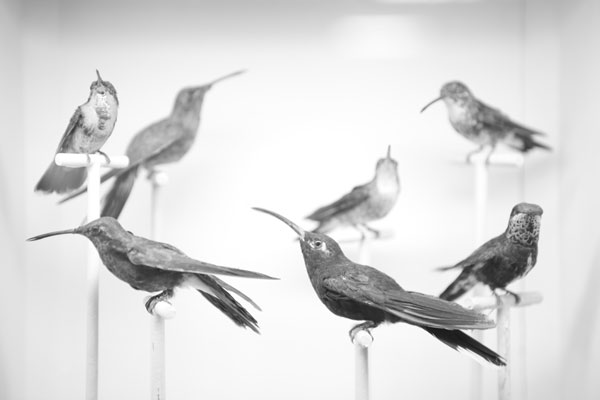
Vera Brueckner, -
what happens when the heart just stops
Documentary | 16mm | black and white | 11:31 | Germany | 2013
A cinematic glimpse through the keyhole of the Bavaria State Collection of Zoology Munich. A humorous and ellipticall Vision - Sound Collage, dealing without the use of dialogue, trying to comprehend the daily life of a special place, where life and death are playing an extraordinary part.
Vera Brueckner born in 1988 and raised nearby Munich , started 2012 film studies at the University for Television and Film Munich after she had made a Bachelor degree in Phtography and Design at Unviversity of Applied Sciences Munich. In 2010 Vera interned at the Photography Museum Reykjavík Iceland and at the Gallery of Photography in Dublin.

Jasper Bruijns
Welterusten
Experimental doc. | hdv | color | 13:0 | Netherlands | 2014
‘Goodnight’ shows nightly Rotterdam. A modern metropolis where light never dims and where loneliness unseen in the emptiness dwells. Someone stays awake to anonymously listen and talk, to encourage lost souls to a goodnight sleep. That does not always work. The night is patient, do not know what is happening, waiting for a new day.
Jasper Bruijns (b. 1989) grew up in Breda, The Netherlands, as one of an identical twin. At a young age he was interested in video and at the age of 16 he started a technical video study. During this study he moved to Stockholm for a period where he worked as an interim with video-artists as Johan Junker and Deniel Eslkils. In 2010 Jasper applied to the art-academy St. Joost in Breda. There he studied under the supervision of filmmakers like Noud Heerkens, Marijke de Bie, Anne van der Putte, Iris Sikking and Rieks Soepenberg. He had the opportunity to experiment with film and to start developing his own filmmaking style. During his time in college he also worked at the production company Volya Films in Rotterdam with filmmakers as Stelle van Voorst van Beest, Ingeborg Jansen, Marleine van der Werf and Marco de Stefanis. The film Welterusten (Goodnight) shows nightly Rotterdam. A modern metroplis where light never dims and where unseen loneliness dwells in emptiness. Someone stays awake and anonymously listens, talks and encourages lost souls for a goodnight sleep. That doesn’t always work out well. The night is patient and does not know what is happening, waiting for a new day. With his short film Welterusten Jasper Bruijns did not only finish his studies succesfully but he also won the ‘TENT Academy Award 2014’ for best video art work for graduation students as well as the ‘Open Public Award’ . His work was nominated for the Tuschinski Award, the Dioraphte Award and the FPN Producenten Award. Welterusten has been screened at TENT, IMpakt, Open Plein Bioscoop and Nederlands Film Festival. At the moment Jasper lives in Breda where he works on his own films and as a documentary cameraman.

Oriane Brun-moschetti
SALUT & FRATERNITÉ
Documentary | hdv | color and b&w | 64:0 | France | 2015
What is the filmmaker’s role in society? How can a cinema be made that counters power? Conceived as a journey through time and films, Salut et Fraternité traces back the itinerary of filmmaker René Vautier, putting his experience in perspective with those of other filmmakers.
A documentary filmmaker, she has worked as an editor, production assistant and director of corporate videos for a decade. She also leads filmmaking workshops for young audiences. In 2007 she and Leïla Morouche co-directed Algérie/Tours/Détours, recreating the organization of travelling projections, the Ciné-pops, in the company of its initiator René Vautier.

Ase Brunborg Lie, Nanna Elvin Hansen
Bevæge Bjerge
Video | mov | color | 29:58 | Norway | 2023
In the mountains and valleys of Sokndal, Norway, the BlackRock(US)- owned mining company Titania AS extracts the mineral ilmenite to create titanium white pigment. Sokndal is the most mined area in Norway, starting from the 1800's. Most of the region's inhabitants work in the mining industry. Titania A/S's quarry, based on open pit mining, is the world's largest ilmenite deposit, accounting for ten percent of the world's production. The black rock ilmenite-noritt is turned into titanium white pigment through different processes and branded as a product with "maximum whiteness". It is in everything from paint, paper, toothpaste, food, medicine and more. Hansen and Lie interacted with the landscape over several months and talked with many locals closely linked to the industry and the geography. Included in the film are a local activist who has taken action against Titania's waste dumping in the ocean, Titania's retired former geo-engineer, and a local mountain guide who knows the landscape and history like the back of his hand. 'Moving Mountains' follows traces of past and present mining in the landscape. While following the interventions in the landscape, the film asks how humans could act as supporting characters where the landscape is the protagonist.
The practice of artist and filmmaker Nanna Elvin Hansen (b. 1989, DK) moves in the murk between art and activism. Building audio and film projects via local, collaborative processes, her works unveil structural violence that impacts on human rights and displacement. Hansen graduated the School of Media Arts at the Royal Danish Academy of Fine Arts (2021). In 2015, she co-founded the collective project The Bridge Radio. Through their artistic work, Ase Brunborg Lie (b. 1983, NO) challenge societal and built structures, point out blind spots in the present and past and investigate how to create in the social, political and ecological present for a possible future. Site specificity, cross-pollination and critical reading of established histories are premised on queer/feminist and post/decolonial thinking, and often include collaboration with researchers, local initiatives, other artists/musicians/architects and others.
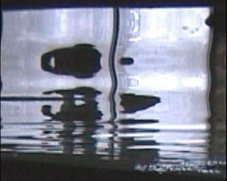

Julien Brunet
La piscine
Experimental video | dv | color | 2:42 | Belgium | 2004
Questioning on the space that surrounds us, how to look at, how do we look at what surrounds us? The swimming pool contains water; this water is a mirror of the space that contains it. The reality or the reality itself?
First name: Brunet Last name: Julien Date and place of birth: August 18th 1979, Uccle. Nationality: Belgium/French. Julian Brunet did from 1995 to 1999, undergraduate studies at the St Luc Tournai in the Decoration section, within the Modern Art department under the direction of Aldo Turin, Christophe Leuzer and Christine Dupuis. Then, he joined the Ecole Superieure des Arts Plastiques et Visuels of Mons and took part in the Image dans le Milieu Workshop (Image in situ) directed by Jean-François Octave and Luc Gossens. He studied for five years drawing, animation, video and photography that were his main exploration fields. He did then an exchange program with Portugal and stayed four month in Porto, at the Universidade do Porto les Belas Artes where he went deeper into photography technique. This was the occasion to take part in the photo exhibition ?La Vierga Negra?.From 2002 to 2004, went a major moment for the previously mentioned workshop members, the creation of ABSL ??A Paxilus dans la Litière?? that permitted him to discover contemporary art. This experience was great of teachings in terms of intern management of a group and event or exhibition management.


Christophe Bruno
Dadamètre
Net art | - | color | 0:0 | France | 2007
Le DADAMETRE est un indice global permettant de mesurer l?écart du discours par rapport à Dada. En 1912, la pièce de théâtre Impressions d?Afrique de Raymond Roussel devient source d?inspiration directe pour Marcel Duchamp qui considère l?écrivain comme « un maître absolu ». La représentation est annonciatrice des futures manifestations Dada. Dans Comment j?ai écrit certains de mes livres Raymond Roussel explique : « Je choisissais deux mots presque semblables (?). Par exemple billard et pillard. Puis j?y ajoutais des mots pareils mais pris dans deux sens différents, et j?obtenais ainsi deux phrases presque identiques. (?) 1° Les lettres du blanc sur les bandes du vieux billard? 2° Les lettres du blanc sur les bandes du vieux pillard. (?) Les deux phrases trouvées, il s?agissait d?écrire un conte pouvant commencer par la première et finir par la seconde. » Cette méthode décrite par Roussel - bien que pré dadaïste - sera considérée ici comme emblématique de Dada dans le champ du langage. Aujourd?hui, alors que le moindre de nos comportements (travail, désir, idéologie, risque etc.) est enregistré et comptabilisé dans le cadre d?indices boursiers sur les marchés d?une finance globalisée, il s?agit de construire de nouveaux indices globaux, cette fois dans le domaine de l?art. L?indice DADAMETRE cherche à mesurer l?évolution au cours du temps de la densité de Dadaïsme dans le discours en mouvement perpétuel, tel qu?il est emmagasiné sur le Web, ceci en s?inspirant de Roussel. Objet artistique avant toute chose, étalon de la déchéance de l?aura du langage, le DADAMETRE, tout en étant basé sur des outils scientifiques rigoureux, constitue sa propre parodie : il vise aussi à interroger le statut d?une Science qui s?est mise peu à peu au service du marketing global et de la surveillance généralisée.
Christophe Bruno vit et travaille à Paris. Depuis 2001, il poursuit sur iterature.com un travail sur les phénomènes de réseau et de globalisation dans le champ du langage, considéré comme un readymade in progress. Iterature.com a été primé au festival Ars Electronica en 2003 pour le Google Adwords Happening et au Share Festival à Turin pour la performance Human Browser, initialement inspirée des Epiphanies de James Joyce. Le projet Dreamlogs, hommage aux travaux OuLiPiens de Georges Perec et Marcel Bénabou, a reçu une aide à la maquette du DICREAM en 2004. Christophe Bruno est aussi lauréat du Prix ARCO nouveaux media 2007 de la Foire d?art contemporain de Madrid, avec son installation Fascinum réalisée en 2001. Son dernier projet, Logo.Hallucination a également reçu une aide du DICREAM en 2006 dans le cadre des dernières Rencontres Paris-Berlin-Madrid. Son travail a été présenté internationalement dans de nombreux festivals, musées, galeries et foires d?art contemporain : FIAC Paris, ARCO Madrid, Diva Art Fair à New-York, Palais de Tokyo à Paris, ArtCologne, MOCA Taipei, Musée d?Art Moderne de la ville de Paris, Rencontres Internationales Paris-Berlin-Madrid, New Museum of Contemporary Art à New-York, Biennale d?Art Contemporain de Tirana, Share Festival à Torino, Transmediale à Berlin, Laboral Cyberspaces à Gijon, galerie Sollertis à Toulouse, ICC Tokyo, Nuit Blanche de Paris, File Festival à Sao Paulo, f.2004@shangai, ReJoyce Festival à Dublin, P0es1s.net à Berlin, Microwave Media Art Festival à Honk-Kong, Vooruit à Gand, Vidarte à Mexico City? Il partage son temps entre son activité artistique, curatoriale, enseignement, conférences et publications. Son travail est consultable sur http://www.christophebruno.com http://www.iterature.com

Shirley Bruno
Tezen
Experimental fiction | hdv | color | 28:0 | USA, Haiti | 2016
A restless daughter meets a spirit who gives her pure water. Her family devours the delicious water until they begin to suspect more than the origin of its taste. A traditional folktale retold entirely featuring a cast of nonactors from one family made of three generations
Shirley Bruno's films draw from her Haitian heritage preserving and radicalizing her ancestral traditions and mythology. She creates modern myths that expose the slippery spaces between the material and metaphysical world, between collective memory and history. In her work she explores the everyday, the Sacred, and the intimate violence in the things left unsaid that mark us generation after generation. Shirley holds a Masters with Distinction from London Film School and a Masters II with Mention from Le Fresnoy - Studio National des Arts Contemporains where she was an artist fellow. She works alternately between New York, France, and Haiti.

Diego Bruno
Galindez
Experimental doc. | 4k | color | 21:56 | Finland, Argentina | 2015
The film focuses on the formation and representation of ideology, the position of the intellectual, and forms of re-presentation, actualisation of historical complexities. Galindez departs from the theatre play El Señor Galindez, written by Argentine psychoanalyst, dramaturge and actor Eduardo Pavlovsky in 1972.
Born in 1978 in Argentina, Diego Bruno lives and works in Helsinki. He studied History of Art at the University of Buenos Aires, holds a BA in Fine Arts from the Escola Massana, Barcelona and an MFA in Fine Arts from the Finnish Academy of Fine Arts. Bruno’s work has been shown at Wiels Center for Contemporary Art, Brussels; Museum of Latin American Art, Buenos Aires; Centre d ́Art Santa Monica, Barcelona; Manifesta 08 Murcia; Hudson Valley Center for Contemporary Art, New York; Center for Contemporary Art Celje; Extra City, Antwerp; The Solo Project, Basel; Museum of Contemporary Art, Barcelona and Malmö Kunsthalle, among others.


Christophe Bruno
Les lois de non conservation
Multimedia installation | | | 0:0 | France | 2010
Les Lois de Non-Conservation est un projet artistique et curatorial sur les questions de temporalité, d`émergence et d`obsolescence, dans le cadre des circuits de production-distribution-consommation du capitalisme de réseau. Il s`intéresse notamment aux processus de consommation de l`art sur différentes échelles de temps, des plus courtes aux plus longues, aux durées de vie des ?uvres, à leurs pannes, leur disparition, leur réincarnation... à l`intrication entre observabilité et usage, entre sacré et profane. Il scrute des phénomènes mal identifiés, qui sont dans un no man`s land entre la pérennité de l`objet et le caractère éphémère de la performance, entre la déchéance de l`aura et sa résurrection. http://www.cosmolalia.com/non-conservation-laws Le dispositif se développe parallèlement avec le projet ArtWar(e), collaboration entre Christophe Bruno et le philosophe Samuel Tronçon. Artwar(e) est une plate-forme de « gestion des risques artistiques » dont l`ambition est de reformuler l`histoire de l`art, les attitudes performatives et relationnelles, ainsi que les pratiques curatoriales, en utilisant des concepts récents issus du marketing, comme les « courbes de Hype ». Artwar(e) a été produit avec l`aide de LES CAPUCINS ? centre d?art contemporain (ville d?Embrun) www.lescapucins.org (direction artistique Caroline Engel) dans le cadre du projet européen SMIR (eSpaces Multimédia pour l?Innovation et la Recherche en production culturelle) / programme Alcotra. http://www.artwar-e.biz
Christophe Bruno vit et travaille à Paris. Son travail propose une réflexion critique sur les phénomènes de réseau et de globalisation dans les champs du langage et de l?image. Primé au Festival Ars Electronica en 2003 pour le Google Adwords Happening, une performance globale sur le « capitalisme sémantique », et au Share Festival à Turin pour Human Browser, il a aussi remporté le Prix ARCO nouveaux media 2007 de la Foire d?art contemporain de Madrid, avec son installation Internet Fascinum. Il est lauréat de deux aides du DICREAM (Ministère de la Culture et de la Communication - Centre National de la Cinématographie) en 2004 et 2006, pour ses projets Dreamlogs et Logo.Hallucination. A partir de mars 2011 il sera commissaire d`exposition pour l`espace virtuel du Jeu de Paume. Il partage son temps entre ses activités artistique et curatoriale, enseignement, conférences et publications. Ses ?uvres ont été présentées internationalement dans de nombreux festivals, musées, galeries et foires d?art contemporain : Jeu de Paume à Paris, ARCO Madrid, FIAC Paris, Biennale de Sydney, Palais de Tokyo à Paris, MOCA Taipei, Musée d?Art Moderne de la ville de Paris, New Museum of Contemporary Art à New-York, Rencontres Internationales Paris-Berlin-Madrid, Biennale d?Art Contemporain de Tirana, HMKV Dortmund, Diva Art Fair à New-York, ArtCologne, Share Festival à Turin, Transmediale à Berlin, Laboral Cyberspaces à Gijon, galerie Sollertis à Toulouse, Gallery West à La Haye, Vooruit Arts Center à Gent, ICC Tokyo, Nuit Blanche de Paris, File Festival à Sao Paulo, f.2004@shangai, ReJoyce Festival à Dublin, P0es1s.net à Berlin, Microwave Media Art Festival à Honk-Kong, Read_Me Festival à Dortmund et Aarhus, Vidarte Mexico City? http://www.christophebruno.com